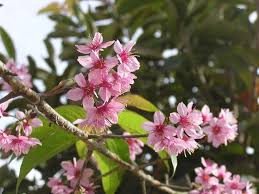
**Introduction to Rosa Gallica in Myth and Legend**
Rosa Gallica, with its captivating beauty and enchanting fragrance, has inspired numerous myths and legends across folk cultures worldwide. In this section, we delve into the rich tapestry of stories and folklore surrounding the Rosa Gallica, exploring its symbolic significance and enduring appeal in the realm of myth and legend.
**1. The Legend of Aphrodite and the Birth of the Rose**
In Greek mythology, the story of the rose is intertwined with the legend of Aphrodite, the goddess of love and beauty. According to myth, the rose was created from the tears of Aphrodite as she wept over the body of her beloved Adonis, who had been mortally wounded by a boar. As her tears fell to the earth, they transformed into delicate rose blossoms, symbolizing the eternal bond of love and the beauty that arises from suffering. The Rosa Gallica, with its exquisite blooms and intoxicating fragrance, is often associated with Aphrodite and her divine essence, embodying the timeless qualities of love, passion, and desire.
**2. The Medieval Romance of Tristan and Isolde**
In medieval Europe, the Rosa Gallica became a symbol of forbidden love and tragic romance in the tale of Tristan and Isolde. According to legend, Tristan, a knight of Cornwall, is sent to Ireland to escort the beautiful princess Isolde back to England to marry his uncle, King Mark. Along the journey, Tristan and Isolde inadvertently consume a love potion, which binds them inextricably together in a passionate and illicit affair. Throughout their tumultuous love story, the Rosa Gallica serves as a poignant symbol of their forbidden love, its crimson petals echoing the intensity of their emotions and the pain of their impossible longing.
**3. The Persian Legend of Layla and Majnun**
In Persian folklore, the Rosa Gallica features prominently in the tragic tale of Layla and Majnun, often referred to as the “Romeo and Juliet of the East.” The story recounts the love between Layla, a beautiful young woman, and Majnun, a poet consumed by his unrequited passion for her. Despite their deep love for each other, Layla’s family forbids their union, and they are torn apart by circumstance and societal expectations. In their despair, Layla and Majnun take refuge in the wilderness, where they are said to have been comforted by the sight of wild roses, including the Rosa Gallica, which bloomed in abundance around them. The roses became a symbol of their enduring love and the beauty that flourishes even in the midst of adversity.
**4. The Symbolism of Rosa Gallica in Celtic Lore**
In Celtic mythology, the Rosa Gallica is imbued with mystical symbolism and spiritual significance, representing the cycle of life, death, and rebirth. The rose’s thorns are seen as symbols of protection and resilience, while its delicate petals symbolize beauty, purity, and the eternal renewal of the soul. In Celtic tradition, the Rosa Gallica is associated with the goddess Brigid, who is revered as the patroness of poetry, healing, and the natural world. The rose’s presence in Celtic folklore reflects its enduring popularity as a symbol of love, beauty, and the divine feminine.
**5. The Legacy of Rosa Gallica in Global Folk Cultures**
Across diverse folk cultures around the world, the Rosa Gallica continues to inspire stories, legends, and myths that celebrate its timeless beauty and symbolic significance. Whether as a symbol of love and passion, a token of remembrance and mourning, or a metaphor for the fleeting nature of life, the Rosa Gallica captivates the imagination and evokes a sense of wonder and awe in all who encounter it. As we explore the rich tapestry of myth and legend surrounding the Rosa Gallica, we gain a deeper appreciation for its cultural significance and enduring appeal in the collective imagination of humanity.
**Part 2: Rosa Gallica in Myth and Legend: Stories and Folklore Surrounding the Rosa Gallica in Folk Cultures**
**Exploring the Rich Tapestry of Stories and Folklore Surrounding Rosa Gallica**
In this section, we continue our exploration of the captivating tales and legends woven around the Rosa Gallica in folk cultures worldwide, delving deeper into its symbolic significance and cultural resonance across diverse traditions.
**6. The Legend of the White Rose of York and the Red Rose of Lancaster**
In English folklore, the Wars of the Roses, a series of dynastic conflicts between the rival houses of York and Lancaster in the 15th century, gave rise to the symbolic association of the white rose of York and the red rose of Lancaster. According to legend, the feud between the two noble houses was sparked by a dispute over the rightful succession to the English throne. To symbolize their respective claims to power, the House of York adopted the white rose as their emblem, while the House of Lancaster chose the red rose. The Rosa Gallica, with its vibrant red petals, became closely associated with the Lancastrian cause, symbolizing loyalty, courage, and the struggle for justice in the face of adversity.
**7. The Myth of Cupid and Psyche**
In Roman mythology, the story of Cupid and Psyche features the Rosa Gallica as a central motif in the tale of love, jealousy, and redemption. According to myth, Psyche, a mortal princess of unsurpassed beauty, incurs the jealousy of Venus, the goddess of love, who orders her son Cupid to make Psyche fall in love with the ugliest creature in the world. However, Cupid is so captivated by Psyche’s beauty that he accidentally pricks himself with his own arrow and falls deeply in love with her. In their clandestine meetings, Cupid gifts Psyche with Rosa Gallica blossoms, whose sweet fragrance fills the air with love and desire, symbolizing the transcendent power of true love to overcome all obstacles.
**8. The Legend of Saint Elizabeth of Hungary**
In Christian tradition, the Rosa Gallica is associated with the medieval saint Elizabeth of Hungary, who is said to have performed miracles of healing and compassion. According to legend, Saint Elizabeth, a Hungarian princess known for her piety and generosity, was once accused of stealing bread to feed the poor. When confronted by her husband, she miraculously transformed the stolen bread into roses, which tumbled out of her apron to reveal the truth of her actions. The Rosa Gallica thus became a symbol of Saint Elizabeth’s humility, charity, and miraculous powers, inspiring generations of faithful believers with its message of hope and divine grace.
**9. The Folklore of Rosa Gallica in Moroccan Culture**
In Moroccan folklore, the Rosa Gallica holds a special place in traditional customs, rituals, and celebrations. Known as the “queen of flowers,” the rose is revered for its beauty, fragrance, and symbolic significance in Moroccan culture. During the annual Festival of Roses in the town of Kelaat M’Gouna, thousands of Rosa Gallica blossoms are harvested and transformed into fragrant rosewater, which is used in religious ceremonies, wedding celebrations, and traditional folk dances. The Rosa Gallica’s presence in Moroccan folklore reflects its enduring popularity as a symbol of love, beauty, and cultural heritage in the hearts and minds of the Moroccan people.
**10. The Universal Symbolism of Rosa Gallica in Global Folk Cultures**
Across diverse folk cultures around the world, the Rosa Gallica continues to inspire awe and wonder with its timeless beauty and symbolic resonance. Whether as a symbol of love and passion, a token of remembrance and mourning, or a metaphor for the fleeting nature of life, the Rosa Gallica captivates the imagination and evokes a sense of connection to the natural world and the mysteries of existence. As we honor the rich tapestry of stories and folklore surrounding the Rosa Gallica, we celebrate its enduring legacy as a universal symbol of beauty, love, and the human spirit, enriching our lives and cultures with its timeless presence and profound significance.










